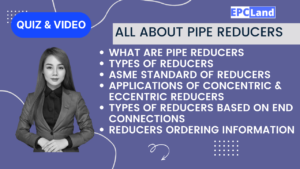1. Pipe Movements Verification while Pipe Routing
Under what circumstances must specific pipe movements be obtained from the Stress Analysis Engineer?
Explanation: Specific pipe movements must be obtained from the Stress Analysis Engineer under certain circumstances, such as long runs of large diameter.
2. Piping Avoidance Areas
According to Pipe Routing guidelines, what areas should piping avoid?
Explanation: Piping should avoid areas designated as equipment and instrument maintenance space, vertical access hatches, crane and monorail travel spaces, and normal personnel access and egress lanes.
3. Bottom-Supported Piping while Pipe Routing
How should bottom-supported piping with no insulation or with insulation for personnel protection be routed?
Explanation: Bottom-supported piping with no insulation or with insulation for personnel protection shall be routed with bottom of pipe (BOP) resting on top of steel (TOS) or top of concrete (TOC).
4. Drain Piping to Oily Water Sewer Drain Cup
What should be the distance between drain piping and the top lip of the oily water sewer drain cup?
Explanation: Drain piping to an oily water sewer drain cup shall stop 1 inch (25mm) above the top lip of the drain cup.
5. Minimum Pipe Size in Pipe Rack
What is the minimum pipe size allowed in the pipe rack?
Explanation: The minimum pipe size in the pipe rack shall be 2 inches.
6. Piping Sizes Not to be Used
According to Pipe Routing, in which cases should piping sizes of 3/8 inch, 1-1/4 inch, 2-1/2 inch, and 5 inch not be used?
Explanation: Piping sizes of 3/8 inch, 1-1/4 inch, 2-1/2 inch, and 5 inch should not be used unless mating to these sizes on equipment and instruments.
7. Pipe Size Change at Equipment Connection
What should be done at any mechanical equipment connection for piping sizes of 3/8 inch, 1-1/4 inch, 2-1/2 inch, and 5 inch?
Explanation: At any mechanical equipment connection of piping sizes 3/8 inch, 1-1/4 inch, 2-1/2 inch, and 5 inch, the size of the connecting piping shall be changed to another size immediately adjacent to the equipment or the compatible fitting(s) shall be provided by the equipment vendor.
Table of Contents
Don’t miss the Course on Effective Isometrics Management: Check Now
Enrollment Link
Recommended courses (Published on EPCLand)
- Complete Course on Piping Engineering
- Basics of Piping Engineering
- Piping Layout Engineering
- Piping Material Engineering
- Piping Stress Analysis
- Material Requisitions
- Piping Material Specifications
- Valve Material Specifications
- Plant Design & Layouts-OISD 118
- Isometric Management
Library of Technical Articles
Don’t miss out the collection of 15+ articles on following topics:
- Basics of Oil and Gas Industry
- Valves
- Testing
- Tank
- Piping Bulk Items
- Pipe
- Metallurgy
- Piping Materials
- Layout
- Instrumentation
- Heat Exchanger
- Type of Contracts
- Codes and Standards
- ASTM Standards
- Articles on Piping Specialty Items
Video details of Complete Course on Piping Engineering
Why Enroll in the EPCLand
Proven Track Record– PTR
Activities & Achievements before launching EPCLand
- Published more than 50+ short courses
- 3000+ Enrolments
- More than 3,500,00 Minutes of watch hours in the last 2 years
- 4000+ Students in 100+ Countries
- Rating of 4+ out of 5
- 1000+ YouTube Videos
- 8K+ Subscribers
What Students will Learn
- Codes & Standards of the Energy Sector
- Piping Material Engineering
- Piping Layout Engineering
- Stress Analysis
Interesting facts
- All the published courses have been developed by Industry Experts with more than 2 decades of experience
- Content is based on Practical experience and real-time problems.
- Content is designed and organized in such a manner that it can be easily grabbed.
- Complete website, Blogs and Quiz sections are Planned, Designed and published by myself (About me: Atul Singla)
- Complete flexibility of Time & Location, Students can access the content from anywhere & anytime
- Moreover, once enrolled, the content can be access as many times as you want, which helps in understand the fundamentals in a better way.
Conclusion
In conclusion, our courses are meticulously crafted by industry experts with over two decades of hands-on experience. The content is rooted in practical knowledge, addressing real-time problems. The material is thoughtfully designed and organized for easy comprehension. Every aspect, from the website to blogs and quizzes, has been planned, designed, and executed by Atul Singla, ensuring a comprehensive and seamless learning experience. With the flexibility of accessing the content at any time and from any location, students have the freedom to learn on their terms. Furthermore, enrollment grants unlimited access, allowing learners to revisit the material as often as needed, fostering a deep understanding of the fundamentals.



